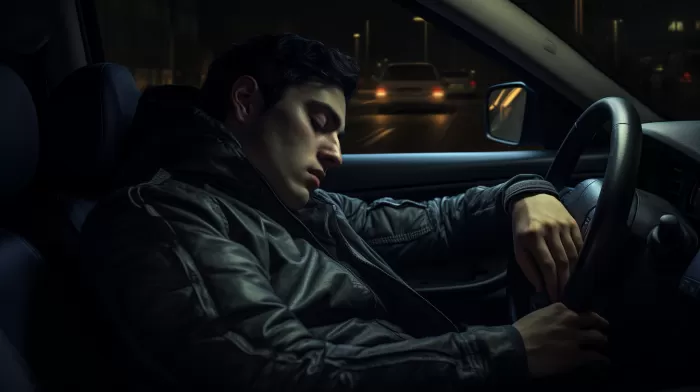Have you ever found yourself fighting to stay awake behind the wheel? It’s a dangerous situation far too common among drivers. In fact, the National Sleep Foundation’s Sleep in America poll found that 60 percent of Americans confessed to driving while sleepy, and 37 percent admitted to falling asleep at the wheel in the past year. Sleepy drivers often convince themselves they are fine to continue driving and fail to realize when they are about to doze off.
The National Highway Traffic Safety Administration estimates that 100,000 police-reported crashes per year are directly caused by sleepy drivers. These accidents result in approximately 1,550 deaths, 71,000 injuries, and $12.5 billion in monetary losses. To help combat the risks of drowsy driving, researchers at the Instituto de Biomecánica de Valencia (IBV) in Spain have developed a new system called the Harken device.
The Harken Device: A High-Tech Solution
The Harken device is a noninvasive sensor system embedded in the car seat cover and seat belt to continuously monitor a driver’s cardiac and respiratory rates. If the driver’s vitals fall into the “drowsy zone,” the system alerts the driver.
“The variations in heart and respiratory rate are good indicators of the state of the driver, as they are related to fatigue. So when people go into a state of fatigue or drowsiness, modifications appear in their breathing and heart rate; Harken can monitor those variables and therefore warn the driver before the onset of symptoms of fatigue,” said Jose Solaz, IBV director of innovation markets in automobile and mass transportation.
Though Harken has already been tested on closed courses and plans to conduct open road testing soon, it is not being integrated into cars just yet. Until this technology becomes widely available, it’s crucial to recognize the warning signs that indicate you are too sleepy to be driving and take action.
Warning Signs You’re Too Sleepy to Drive
Here are some common warning signs that you may be too tired to continue driving:
- Difficulty focusing, frequent blinking, and heavy eyelids: When your eyes feel like they’re working overtime to stay open, and you find yourself blinking rapidly or struggling to keep your focus, it’s a sign that your body is trying to stay awake.
-
Trouble recalling the last few miles driven: If you can’t remember the details of your journey or realize you’ve missed a turn or exit, your brain might not be functioning at its best due to fatigue.
-
Drifting between lanes or hitting the rumble strip: This could be a sign that you are not completely in control of your vehicle, as your mind and body are starting to shut down from exhaustion.
-
Yawning or having trouble keeping your head up: When you can’t stop yawning or find it challenging to hold your head up, your body is sending you a clear message that it’s time for rest.
If you experience any of these signs, you need to pull over as soon as you can do so safely. It’s not worth risking your own life or the lives of others on the road.
Preventing Drowsy Driving
To avoid drowsy driving in the first place, try incorporating these habits into your routine:
- Prioritize sleep: Aim for 7 to 9 hours of sleep each night and establish a regular sleep schedule to ensure your body gets the rest it needs.
-
Take breaks during long drives: Stop every couple of hours or every 100 miles to stretch, walk around, and recharge. If possible, switch driving responsibilities with a passenger to split the time behind the wheel.
-
Be aware of the side effects of medications: Certain medications, such as antihistamines or antidepressants, can cause drowsiness. Consult with your doctor or pharmacist to ensure that your medicines won’t impair your ability to stay alert while driving.
-
Limit alcohol and caffeine intake: Alcohol can make you drowsy, while caffeine provides only short-term alertness. Try to minimize your consumption of both before hitting the road.
-
Consider napping: If you notice signs of drowsiness while driving, pull over for a quick 20-minute power nap.
By recognizing the warning signs of drowsy driving and taking necessary precautions, you can help reduce the risk of accidents and keep roads safer for everyone. Until technology like Harken becomes commonplace in our vehicles, staying aware of our own limits and prioritizing sleep is essential for safe driving.



